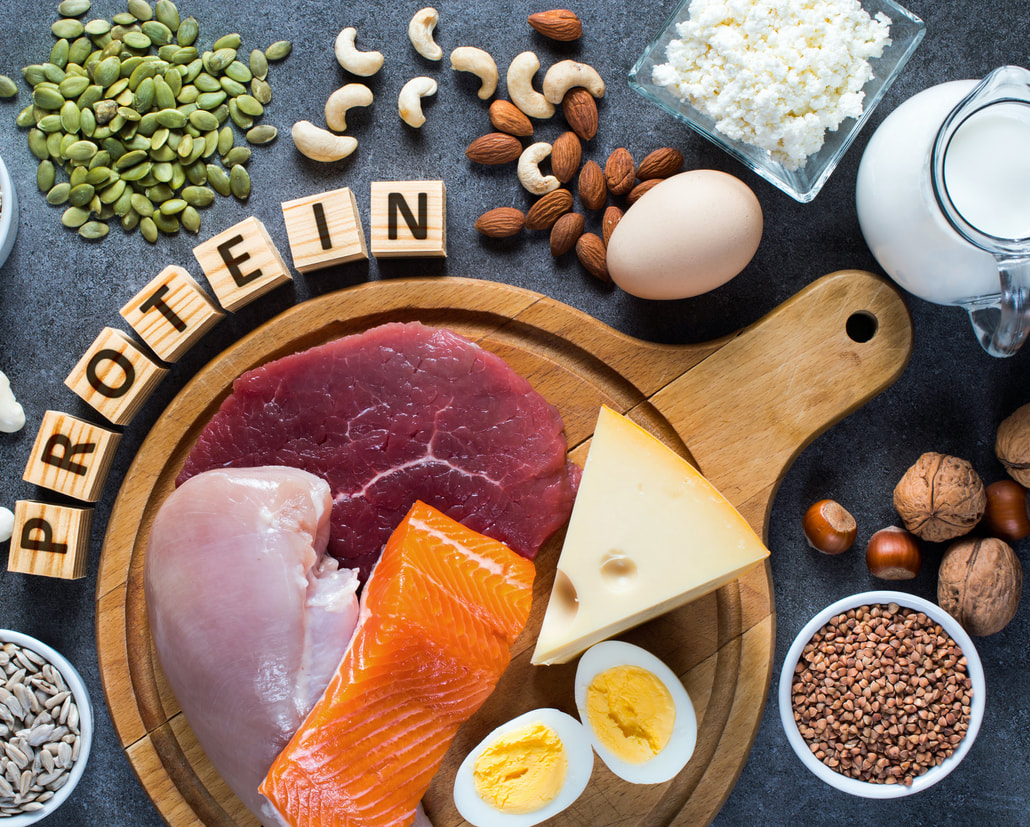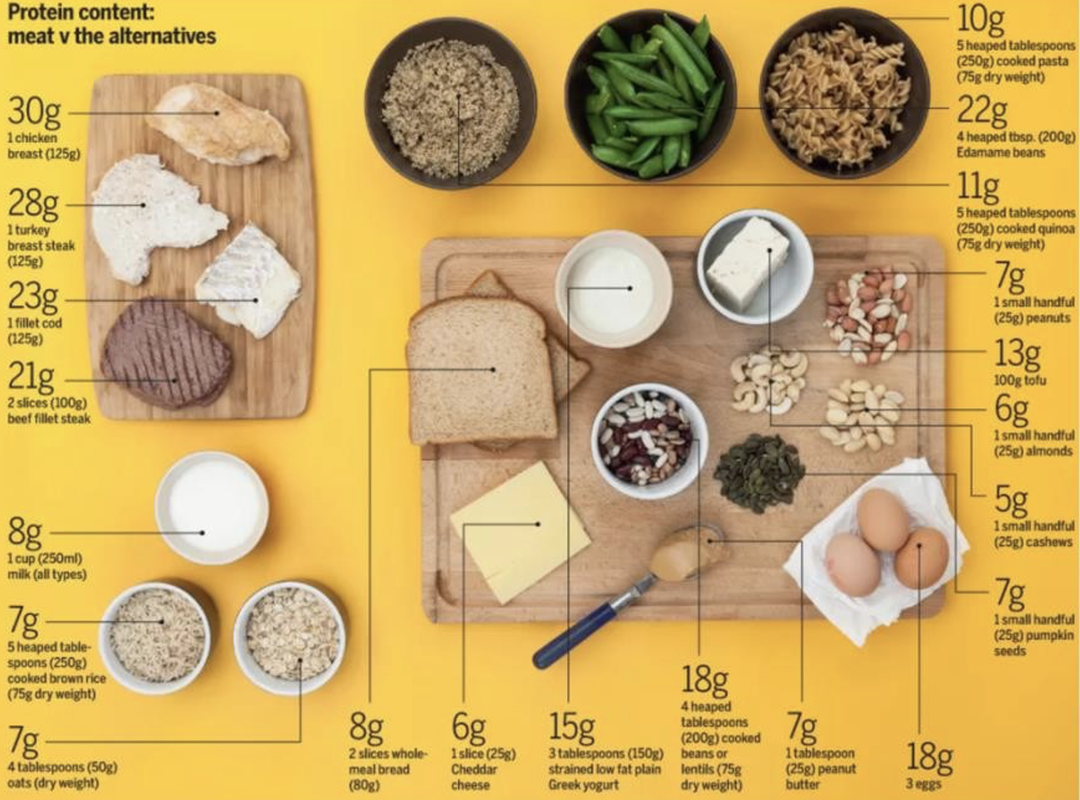Fuelling for performance in the perimenopause and menopause: Sources and importance of protein14/11/2022 Recently I posted about the importance of protein for women in peri and menopause, and particularly anyone who is training. I wasn’t entirely surprised at the reaction to my post – mostly women realising that they aren’t hitting their protein target, and recognising why they were not performing at their best, frequently not sleeping well, and often still feeling very hungry. A lot of questions that came up were about the best sources of protein, and also how other nutrients play their part. So, here, as promised is my blog post where I dive a bit deeper into some of these points. How Your Hormones Impact Your Protein Needs Protein intake is especially important for women. Our hormonal fluctuations often put us in a catabolic state, i.e you are breaking down or losing overall mass, both fat and muscle. So, depending upon our menstrual cycle and menopausal status, we may be more inclined to break down, than we are to build muscle. There are various impacts to pay attention to during the phases of a normal menstrual cycle, but I am going to focus here on the peri and post-menopausal years. At this time hormones begin to fluctuate and decline, and we lose the anabolic (muscle-making) stimulus that oestrogen helped provide. So this is when we need more protein to pick up where our hormones left off. Research also shows that with age, we also need more protein for the same training adaptations. How Much Protein Do Active Women Need? Whether you are a strength or endurance athlete, you need plenty of protein to support your training and recovery. In general terms, women should aim for 1.7 to 2.4 grams of protein per kilogram of body weight per day. Women in the menopause transition however should target the higher end of that range (2.2 to 2.4 grams per kilogram), aiming for the lower end on easier days, and the higher end on very heavy training days. Protein is also necessary to facilitate fat loss, as it keeps the muscles repairing and rebuilding, allowing carbohydrates to refuel the muscles and liver – allowing fat stores to stay empty. Some of the other great properties about protein are that it takes more work to digest than other foods, so it burns calories when we simply process it, and so it also increases satiety (the feeling of being full). What are the best protein sources? This is the BIG question that I get asked about. I recognise that there is a trend towards plant-based diets at the moment, which I understand. However, we need to be aware of the best sources of protein, and this is where those following a vegetarian or vegan diet will need to be extra mindful of making sure they are getting enough quality protein. The diagram below demonstrates some of the most common sources of protein. If you eat animal-based protein like chicken, beef, or fish we can see that an average 100-125g serving is giving you between 21 and 30g of protein. One cup of two percent cottage cheese is also about 30g, and low-fat Greek yogurt contains about 20g per cup serving. If you are eating a plant-based diet, it can be slightly more challenging, where you should look to meet your protein needs with soy foods like tempeh, edamame and seitan (but be aware of the gluten here if you have any intolerances), as well as nuts and seeds (and nut and seed butters) and beans and legumes. A blender is also your friend here. You can blend 90-110g of tofu with nut butter, frozen cauliflower, and hemp and chia seeds to get a completely vegan 30g protein hit. What about protein powders? It is very common in today’s fast paced world to find ourselves squeezed for time to not only fit in our training, but also ensure we prioritise that important post exercise protein hit. So we often reach for the convenient solutions - protein bars and protein drinks. These will meet our protein requirements, right? Up to a point, but these sports foods are engineered specifically from a macronutrient, and are not as smart as nature, often missing a lot of the phytonutrients that help our body digest and adapt to stress. So whilst these products are convenient and have their place (for example trying to get that post exercise protein hit when you are travelling back from training) real food is always better.
What sort of composition should you be looking for from a protein powder? I am not a nutritionist*, but from the studies I have done via the Dr Stacy Sims 'Menopause for Athletes' course, she gives some great insights into the different types available and what we should be looking at:
Timing of protein intake Equally important as how much protein you eat is when you eat it. Our bodies respond best to an equally spread dose of protein throughout the day. Pre-menopausal women should aim for 30 grams of high-quality protein within 30 to 45 minutes after exercise and regular doses of 30 to 40 grams of protein at each meal and 15 to 20 from snacks. A little known fact is that the timing of this post-exercise protein is even more important for women than it is for men, as our bodies return to baseline a lot quicker, whereas men have a longer window to refuel. After that point, your insulin sensitivity declines, so it takes your muscles longer to absorb the glucose from your bloodstream, and as a result, your overall glycogen storage is lower. Eating immediately after hard exercise delays this decline in insulin sensitivity. That’s especially important for women in the menopausal transition, who may already be more insulin resistant because of the hormonal changes. Also, as you reach peri and post menopause, your anabolic resistance increases, so you want to aim to have that post-exercise protein closer to 40 grams. By ensuring you are taking in regular doses of protein throughout the day, you’ll maintain a good nitrogen balance (that is the equilibrium between protein intake and losses) for lean mass development. This will help improve your recovery, reduce post-exercise soreness, and lower your risk for injury as well. For those who are not following a plant based diet, some casein rich protein is especially useful before bedtime as the amino acids are absorbed as you sleep, in fact research shows that a nightly dose of protein boosts protein synthesis by 22 percent. (This is best to come from a real food source rather than a protein powder). There is a reason why Sir Chris Hoy has been quoted as saying he has some Greek yoghurt before bed - this is an excellent good source of protein, providing two to three times the amount of regular yoghurt, the majority of which is casein. Food for thought indeed - excuse the pun! But of course it is not all about protein, we should be getting a balance of carbohydrates and fats in our diets too. I will cover the importance and timing of these in future blog posts and look at why it is harmful that these nutrients have been demonised and restricted in recent years. *I would always recommend seeing a qualified nutritionist for a full assessment of your nutritional needs. I work with Ellie Holly who is a nutritional therapist and medical herbalist. I work with a range of colleagues to ensure that I can advise my coaching clients accurately to complement their training. Get in touch if you would like to hear more about my holistic approach to meeting your goals. Further readings and references: Hausswirth C. and Le Murr Y. Physiological and Nutritional Aspects of Post-Exercise Recovery: Specific recommendations for female athletes. Sports Med, 2011; 41(10): 861-882. Tarnopolsky MA. Sex differences in exercise metabolism and the role of 17-beta estradiol. Med Sci Sports Exerc, 2008; 40 (4): 648-54. Roepstorff C, Steffensen CH, Madsen M, et al. Gender differences in substrate utilization during submaximal exercise in endurance-trained subjects. Am J Physiol Endocrinol Metab 2002; 282 (2): E435-47.
0 Comments
|
AuthorDenise Yeats is a coach, personal trainer, endurance athlete and avid adventurer. She is passionate about supporting women to achieve their goals, working with, not against their changing physiology. Archives
July 2024
Categories |
Proudly powered by Weebly




 RSS Feed
RSS Feed